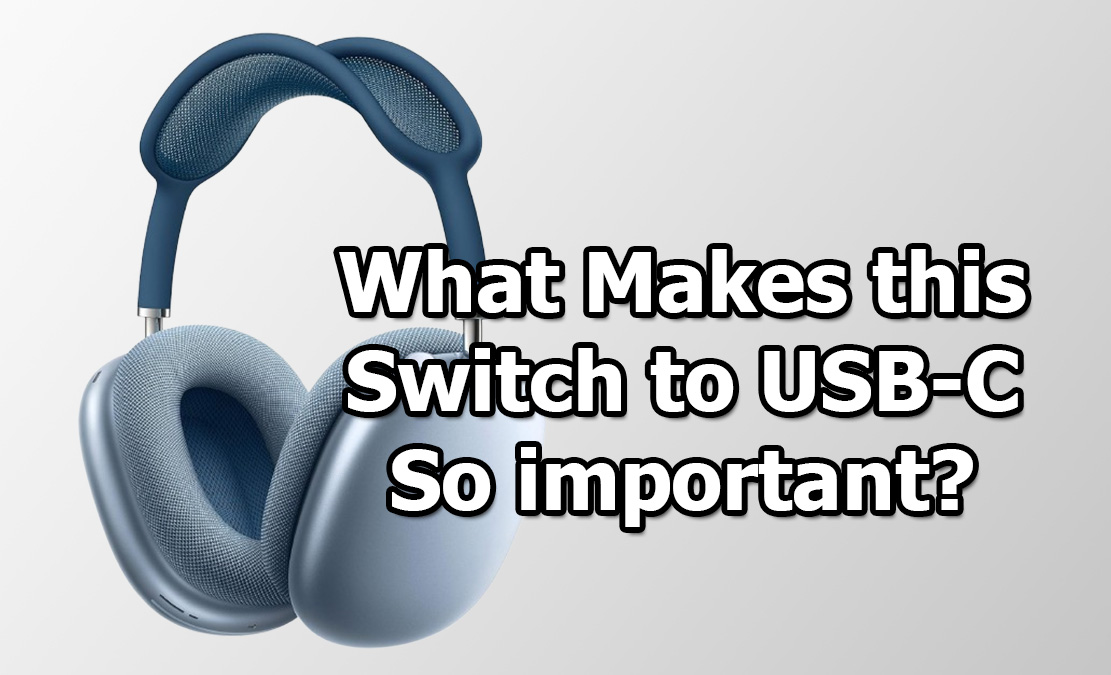Apple’s decision to update the AirPods Max to include USB C marks a significant step in streamlining its product ecosystem. The shift comes as part of a broader transition across their devices, making USB C the standard port for everything from iPhones to MacBooks. But what makes this switch to USB C so important, especially for AirPods Max users?

A Unified Charging Experience
The primary benefit of moving to USB C is the convenience of a unified charging solution. Instead of juggling multiple cables for different Apple devices, users can now use the same USB C charger for their MacBooks, iPads, iPhones, and now, AirPods Max.
This standardization eliminates the need for carrying different chargers and simplifies the overall experience for Apple customers. For frequent travelers or those deeply embedded in the Apple ecosystem, this change is a game-changer.
Faster Charging Speeds
USB C offers faster data transfer and charging speeds compared to the Lightning connector. With the AirPods Max now featuring USB C, users can expect quicker charging times, ensuring they can get back to their audio experience faster.
Whether it’s a quick top-up before heading out or needing to charge between long flights, USB C offers a more efficient solution for keeping your headphones powered up.
Future-Proofing
As Apple continues to evolve its product line, transitioning all devices to USB C ensures that the AirPods Max remain future-proof. With the European Union pushing for a common charger to reduce e-waste, it’s clear that USB C is here to stay.
By adopting this port, Apple is ensuring that the AirPods Max won’t become outdated or incompatible with future devices, making the investment in these premium headphones even more worthwhile for long-term users.
Improved Data Transfers
For audiophiles and professionals, another advantage of USB C is its capability for better data transfers.
While most users will still rely on wireless connections, the USB C port opens up the potential for higher-quality wired audio options, giving users access to lossless audio or other high-fidelity options that were previously limited with Lightning or Bluetooth.
Increased Durability and Versatility
The USB C port is not only faster but also more durable and versatile. Its reversible design is user-friendly, making it easy to plug in the first time without worrying about orientation.
Furthermore, USB C cables tend to be more robust and last longer compared to older Lightning cables. This upgrade aligns with the premium nature of the AirPods Max, offering a build quality that matches the luxurious price tag.
Environmental Considerations
The switch to USB C also ties into Apple’s broader commitment to sustainability. By reducing the need for multiple types of cables and chargers, Apple can help decrease electronic waste.
This shift towards a universal charging solution reduces the environmental impact of producing and disposing of different cables, fitting into Apple’s long-term goal of becoming a carbon-neutral company.
Conclusion
The switch to USB C on the AirPods Max represents much more than just a new charging port. It signals Apple’s commitment to creating a more cohesive and user-friendly product ecosystem, while also future-proofing its devices.
For users, it means faster charging, better data transfer, and the convenience of one universal cable for all their Apple gadgets. The move is a welcome upgrade that ensures the AirPods Max remain cutting-edge, offering a better overall experience for tech enthusiasts and audiophiles alike.
Also Check:
- Good News, AirPods Max Now Supports USB-C: A Future-Ready Upgrade
- AirPods Max Not Connecting? Here’s Why and How to Fix It
- AirPods Max USB-C: Finally here—why it’s a game-changer
- AirPods Max Not Connecting to Your iPhone? Here’s How to Fixed It in 5…
- AirPods Max Not Connecting? Here’s Why and How to Fix It
